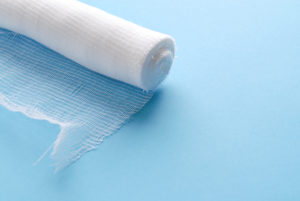 With a 99% cure rate, Mohs surgery is one of the most effective ways to treat patients with skin cancer. Once the tumor has been removed, the remaining skin often needs to be stitched closed to complete the procedure. While this may seem like the last stage of treatment, Dr. Adam Mamelak emphasizes that the recovery period is just as important for ensuring a positive outcome.
With a 99% cure rate, Mohs surgery is one of the most effective ways to treat patients with skin cancer. Once the tumor has been removed, the remaining skin often needs to be stitched closed to complete the procedure. While this may seem like the last stage of treatment, Dr. Adam Mamelak emphasizes that the recovery period is just as important for ensuring a positive outcome.
As a board-certified dermatologist and fellowship-trained Mohs micrographic surgeon, Dr. Mamelak has performed numerous Mohs procedures and skin cancer treatments for his patients at The Austin Mohs Surgery Center. “I’m always surprised how quickly patients try to get out of the chair after I finish operating on their skin cancer,” he says, recalling that many patients don’t realize they need a bandage put on their surgical site.
While he understands surgery—even an outpatient procedure like Mohs—can cause patients anxiety, Dr. Mamelak reminds patients that bandaging their wound is crucial for a smooth healing process. Surgical bandages, including pressure bandages, offer many important benefits, such as:
- Protecting against injury when the wound is just beginning to heal
- Providing a barrier from dirt and bacteria so the wound stays clean
- Decreasing excess bleeding from the area by applying mild pressure
- Keeping the wound moist to speed healing and reduce scarring
Does the Wound Need to Breathe After Mohs Surgery?
Dr. Mamelak says this is one of the biggest myths in wound care. Patients often ask when they should air out their wound, referring to removing their bandage to allow the wound to “breathe.” Several medical studies have proven that wounds heal faster when they are kept moist. They tend to be less inflamed, and the skin and blood vessels often regenerate at a faster rate.
It may seem like a good idea to allow more air to access the wound, but Dr. Mamelak says this can actually impair healing. While oxygen is important for the healing process, the wound naturally receives this through the body’s circulatory system and blood supply. Exposure to a dry environment can lead to cell death and cause scabs to form, which slow the healing process. In addition, scabbing is more likely to result in a more noticeable scar. This is why letting your wound “breathe” typically does more harm than good.
Bandages Improve Healing and Minimize Scarring
Dr. Mamelak encourages patients to closely follow their surgeon’s post-operative wound care instructions to ensure optimal healing. By properly bandaging your wound, as well as following your surgeon’s advice on what activities you can do with stitches, you are taking valuable steps towards achieving the best possible outcome.
To learn more about healing after skin cancer and Mohs surgery, please feel free to contact us.
